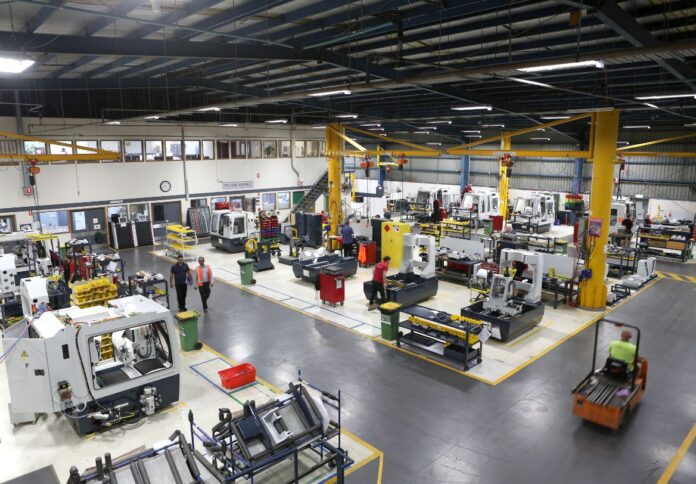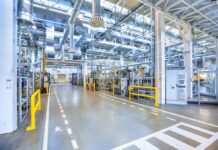
Article by Martin Ripple, Group Chief Executive Officer, ANCA
In today’s increasingly globalised world, the strength and resilience of a nation depend on its ability to nurture and grow strategic industries.
As demonstrated by the COVID-19 pandemic, countries that can rely on domestic manufacturing capabilities are better positioned to withstand external shocks and rely on a resilient supply chain.
For Australia, investing in advanced manufacturing, and the new technologies that bolster the sector is essential not only for economic growth but also for fostering sovereign resilience.
At ANCA we define technological progress, or what some call innovation, as achieving more output with less input. More productivity in manufacturing means for our customers more output with less dollars invested, more output with less human workforce required and less energy consumed. And that means Australia can have a competitive manufacturing sector for the domestic and export market.
Checklist of action
ANCA is calling on governments – at all levels, and of all persuasions – to move their focus to crafting consistent policies to ensure manufacturing capability stays onshore and local businesses can thrive. The risk of the alternative is too great to ignore.
The government can play a pivotal role in revitalising the sector by taking firm actions, such as:
- Re-launch industry 4.0 initiatives with broad industry participation
- Commission a report on industrial productivity
- Consider developments of manufacturing precincts
- Prioritise strategic investments in advanced manufacturing infrastructure and research
- Agree on percentage of local content for defence contracts
Manufacturing has long been an essential part of Australia’s economy. It provides jobs, drives innovation and makes significant contributions to the growth of the nation. Furthermore, it supports the growth of small and medium-sized enterprises, which are crucial for the country’s economic health. A strong manufacturing sector provides opportunities for skilled workers and helps support local communities. However, in recent years, the sector has faced numerous challenges, including declining competitiveness, higher costs and a move offshore.
Despite substantial funding commitments, Australia’s manufacturing sector is facing a continued decline. According to recent data from the Australian Industry Group, business conditions across the industry dropped by 10.5 points in December 2022/January 2023 – the ninth consecutive period of contraction.
While the Government has made significant moves to safeguard Australia’s manufacturing industry through programs like the Modern Manufacturing Initiative and the newly established National Reconstruction Fund, there is more that needs to be done. We know a strong manufacturing sector drives innovation and helps foster technological development. It provides opportunities for research and development, which can lead to new and improved products and processes, and the opportunity to capitalise on overseas opportunities.
As the only manufacturer of five-axis grinding machines in Australia, ANCA has been able to stay ahead of the curve by being flexible and innovative, through an increased focus on automation and technologies like Artificial Intelligence so customers can manufacture goods with little to no human intervention.
In fact, ANCA has been working on a product that is first in our global market that enables 66 hours of unattended operation* for manufacturers. The product is called ‘AIMS’ or ANCA Integrated Manufacturing System. An Industry 4.0 factory-wide integration, AIMS considers the factory as a single machine. Rather than separating workflow into many different elements of design, blank preparation, grinding, laser marking, washing, packing and shipment – the system automates the entire tool manufacturing process and complementary technologies while being brand agnostic, meaning it works with machines from different manufacturers.
By automating repetitive manual tasks, employees can focus on more value-adding activities and ultimately this increases productivity. The AIMS system allows for more with less. More products with less human capital and less investment. This Industry 4.0 manufacturing technology will be applied more broadly in Australia and provides a solution for ‘on-shoring’ production, which we are seeing our customers in Europe adopt rather swiftly.
Research suggests that manufacturing automation can increase productivity by 50 per cent per annum, and when fully deployed and paired up with other features, productivity gains of up to 300 per cent could be feasible. A failure to maximise the automation opportunity will see Australia’s economy suffer in the long run.
To build sovereign resilience, governments should prioritise strategic investments in advanced manufacturing infrastructure and research. Developing state-of-the-art facilities and fostering public-private partnerships will not only create a conducive environment for innovation but also attract top talent and resources to the sector. This, in turn, will help Australian manufacturers stay at the forefront of technology and maintain a competitive edge in the global market.
Investment in the creation of dedicated manufacturing precincts is a further way we can compensate Australia’s geographic location to global supply chains and build an environment conducive to local manufacturing collaboration and critical mass. This model of co-located industry clusters would lead to synergies and overall economic growth.
It has been predicted that automation could add between $1.1 trillion to $4 trillion to the economy over the next 15 years providing every Australian with $4,000 to $15,000 in additional income per year by 2030. Achieving these benefits depends on ensuring displaced workers can get new jobs. By closing the existing skills gap and preparing workers for the demands of an increasingly automated and technology-driven industry, Australia can ensure its human capital is an asset in building resilience.
Building sovereign resilience requires a holistic approach that encompasses investment in advanced manufacturing, new technology, education and infrastructure. The Government must recognise the urgent need to support local businesses in their pursuit of innovation and global competitiveness. The future of Australia’s economic resilience and sovereignty depends on it.
*This figure was calculated by using the example of a production environment with a fully automatic AIMS cell which consists of five dispatch lanes for five-tool diameters, three finished goods lanes, an AutoMarkX laser marking station and Zoller Genius 3 with robot interface and tool wash station – that equates to 66 hours of unmanned operation.


















